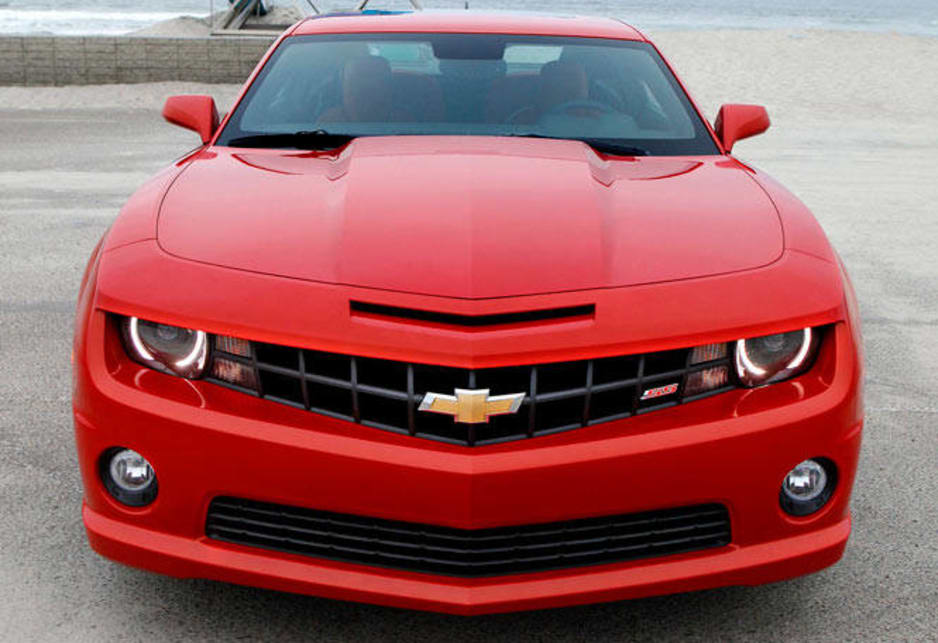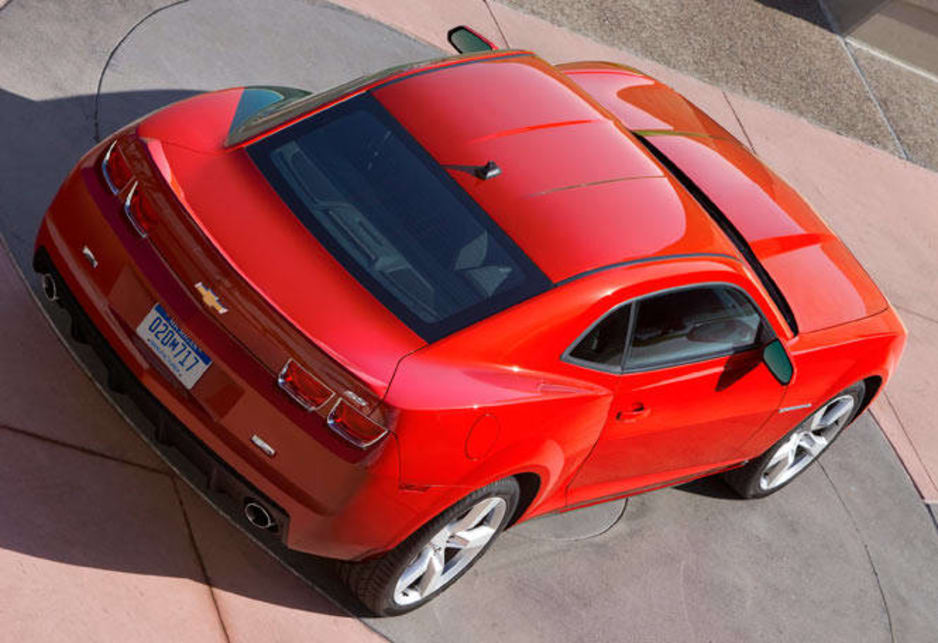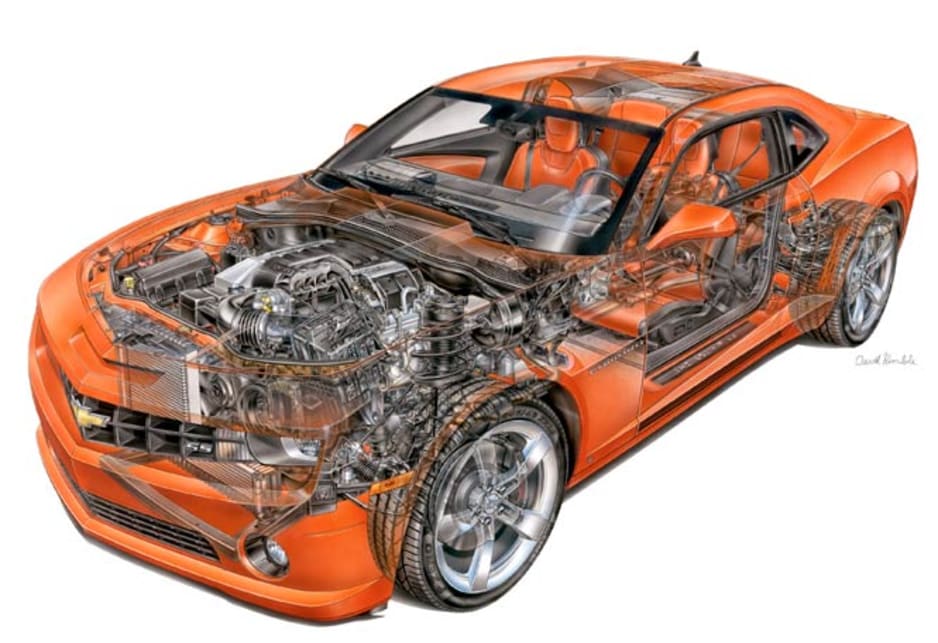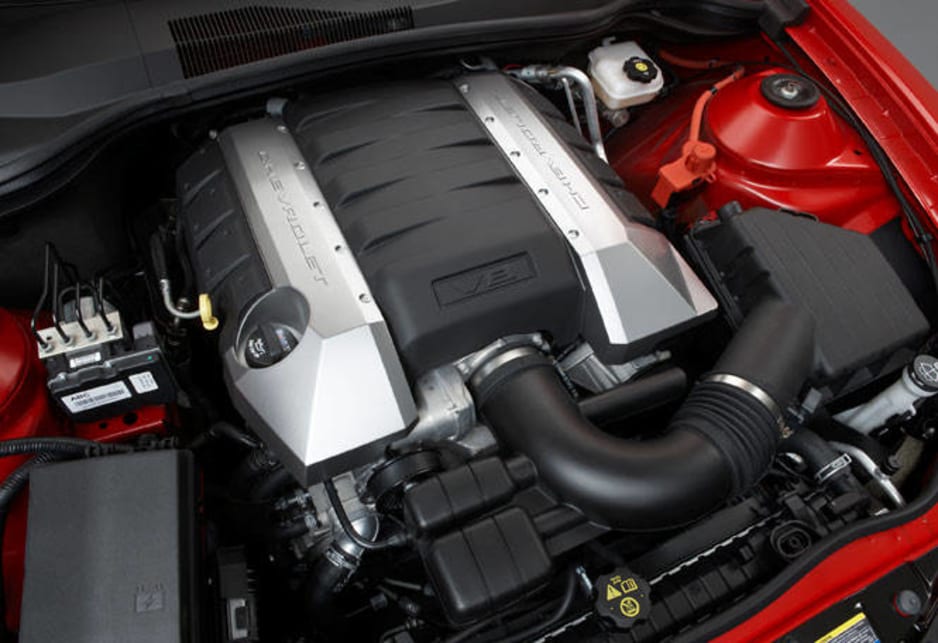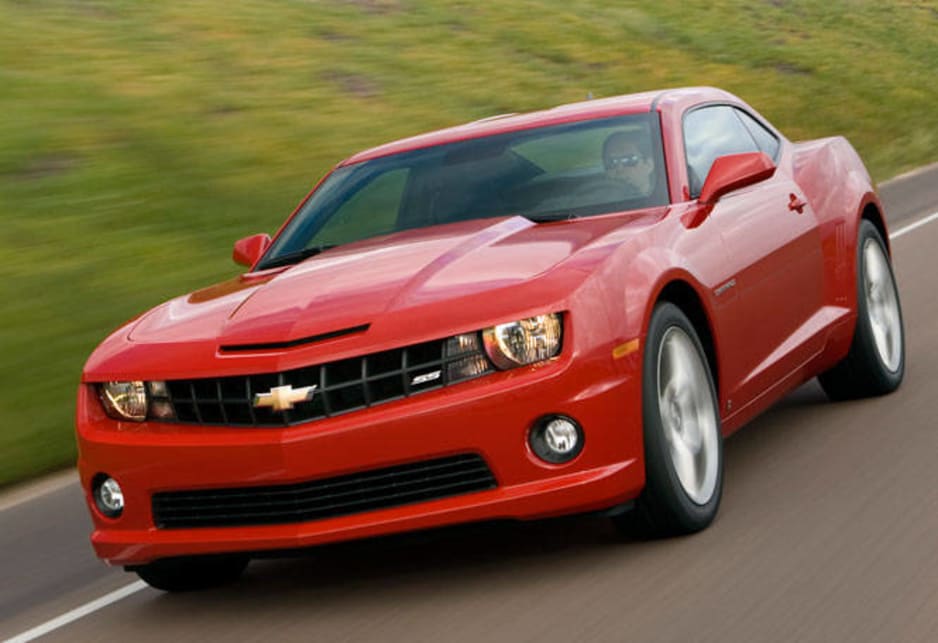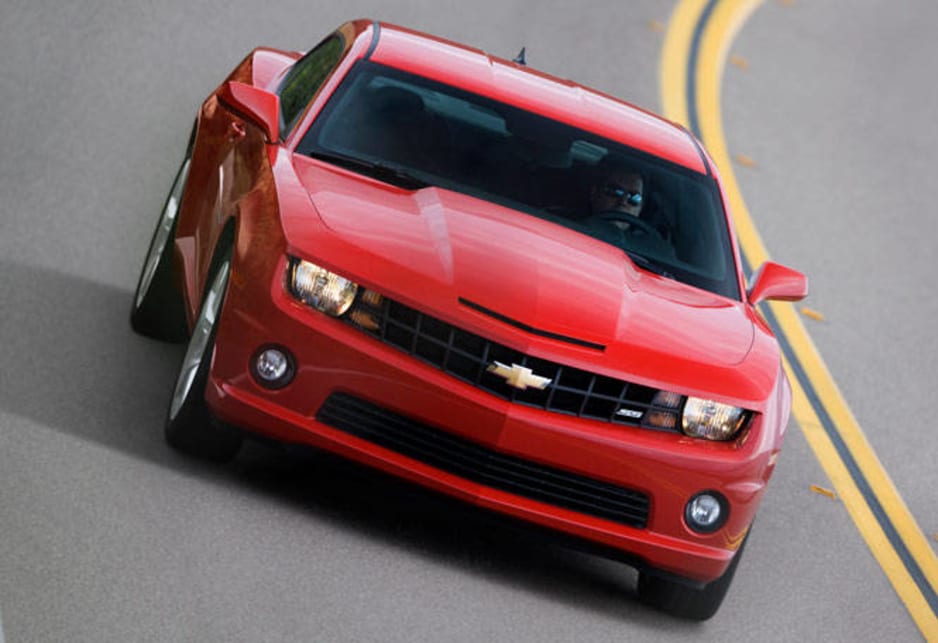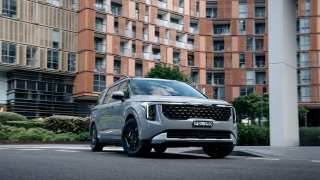
Chevrolet Camaro 2010 Review
- Chevrolet Camaro
- Chevrolet Camaro 2010
- Chevrolet Camaro Reviews
- Chevrolet Reviews
- Chevrolet Coupe Range
- Coupe
- Chevrolet
- Sports cars
This car is a Commodore, but not as we know it. The Aussie family hauler has been tweaked, teased and tizzied into something both retro and futuristic. It's a Camaro.
The great looking two-door muscle car is a Chevrolet showroom star at home in the USA, where sales are expected to top 80,000 cars a year, but Americans have no idea that all the hard work on their hero was done down under.
"The vision for the Camaro was always easy. We had lots of debates about how to achieve it, but the vision was always clear," says Brett Vivian, Holden's vehicle line director and one of the key team members.
"It's all based on the VE. It's not like it had to be re-engineered, we just adjusted it," says Gene Stefanyshyn, the global vehicle line executive for global rear-wheel drive and performance vehicles.
The Camaro was born out of a General Motors' global program that made GM Holden the home base for large rear-wheel drive cars. The idea was to create a homegrown Commodore for Australia, then to use the mechanical platform and cost-effective engineering experience as the basis for other spin-off cars.
No-one at Fishermans Bend will talk about the whole program — which many people expected to result in the return of a compact car which could have been called Torana — but the VE is running strongly, there was a successful Pontiac export program, and the Camaro.
To get things straight from the start, the Camaro is a terrific car. It looks right and it drives right. There is mean muscle in the bodywork and the car is both fast and quick, but surprisingly easy and relaxed to drive.
Hundreds of people worked on the Camaro program on both sides of the Pacific, from the design centre at Fishermans Bend to the Canadian factory in Ontario where the car is built, but it was honed to a sharp edge at the Lang Lang proving ground on the road from Melbourne to Phillip Island.
That is where I have come for an exclusive drive in a pair of Camaro coupes as part of the judging process for the World Car of the Year award. Holden has rolled out a regular red V6 and a hot black SS, as well as ace test driver Rob Trubiani and a range of Camaro specialists.
They have a story that could easily fill a book but the touch points are easy. The Camaro was born as part of the global rear-drive program, shares its mechanical package with the VE Commodore but is totally tied to a Camaro concept car that was a massive hit at the Detroit Motor Show in 2006. Since then there has also been a Camaro convertible show car, but that's another story ...
"We started this project in early 2005. May of '05. By October we had a lot of the proportions locked in. They built the show car and in Febuary of '06 we started on the project here in Australia," says Stefanyshyn, before getting into the heart of the car.
"We took the rear wheel and moved it forward by something like 150mm. Then we took the front wheel and moved it forward by 75mm. And we took the wheel size up from 679mm to 729mm. Part of the reason we moved the front wheel was to get the bigger wheel size. We also took the A pillar and moved it back 67mm. And the Camaro has a shorter rear overhang than the Commodore."
The touchstone for the whole project was the Camaro concept and one of the two cars was shipped to Melbourne while the body was prepared for production. "Any time we had a question we would just go back to the concept car," says Peter Hughes, design manager. "We have an architecture from VE, and then we got to skin it. The architecture is brilliant underneath, proportionally it was spot-on. And we also took the roof down by about 75 millimetres."
The key to the car, Hughes says, is the giant rear haunches. The huge side panel includes a sharply-radiused guard which runs all the way from the window line out to cover the wheel. It took more than 100 trial runs on the stamping press to get it right — and ready for production.
There are many, many more stories but the end result is a car with an ideal 50:50 weight distribution, a choice of V6 and V8 engines, a cabin with retro-inspired dials, and driving dynamics which are only beaten in the USA by the race-bred Chevrolet Corvette. Best of all, the car looks just right from every angle. That includes the broad channel through the centre of the roof, the raised bonnet, the semi-hooded headlamps and the shape and location of the tail lamps and exhaust.
It is clearly inspired by the late-1960s Camaro muscle car, but with a modern twist that brings the design right up to date. "It looks pretty tough on the road. It could sit a bit lower, but that's a personal thing," says Hughes. The Camaro is so absolutely fine that it was chosen to star in a Hollywood blockbuster, the Transformers movie. Twice.
Driving
We already know the VE Commodore drives well. And the HSV Holdens spun from the basic package drives better, and faster. But the Camaro trumps them all thanks to some key changes which impact heavily on the seat-of-the-pants response of the American muscle machine.
The Camaro has a bigger footprint and bigger tyres, as well as a rear axle that is set closer behind the driver. The combination means there is more grip and better feel. Lapping the ride-and-handling course at the Lang Lang proving ground, the Camaro is significantly quicker and - far more important - easier to drive. It feels more relaxed, grippier and more responsive.
With GM Holden's ace test driver Rob Trubiani at the wheel it is just plain fast. In fact, it is scary quick as he punches up to 140km/h through a series of fast swerves. But the Camaro is also giggle-me sideways in a slow corner.
I have done many laps of the Lang Lang course and I remember the slowest left-hander — copied from a corner in Fishermans Bend - where Peter Brock used to pitch his original HDT Commodores sideways to show what they could do. And the high-speed swerves where Peter Hanenberger once lost control and spun backwards into the shrubbery - in a Falcon.
A Commodore copes easily with the course and an HSV monster gobbles the straight bits and has you handing on as it thunders through the curves. The Camaro is different. The SS V8 feels like it is riding on big balloons instead of its Pirelli P-Zero rubber. That's because the larger rolling footprint of the bigger 19-inch wheels and tyres gives a better grip with a bigger contact patch. Look for the same package on a future Holden, although it will take significant suspension tweaking - all done for the Camaro - to make it happen.
The Camaro is only the second American car I have driven with genuine steering feel, and the other is the Corvette. It comes from the same retro garage as the born-again Dodge Challenger and the latest Ford Mustang, but I just know it drives way better than them.
The six-speed shift is pretty slick and it's easy to get the 318 kilowatts from the 6.2-litre V8 into action. Inside the cabin, I notice the dashboard is set further back than the Commodore, with dials which could only be Chevrolet. And Camaro retro.
There are very few signs of Holden inside, apart from minor switches, which proves - again - how much work went into getting the Camaro right. Headroom is crimped and the view over the bonnet is a little restricted, thanks to the styling demands, but it's all part of the Camaro experience. And it's a great experience. It is way more than I expected when I rolled into Lang Lang and easily good enough to have me on the phone to World COTY judges to encourage them to get some time with the car.
The only question now is if the Camaro can come home to Australia. Everyone on the team is keen, and there are left-hand drive cars on the road in Melbourne almost every day for evaluation work, but it comes down to dollars and sense. Sadly, passion and the quality of the Camaro is not quite enough this time.


